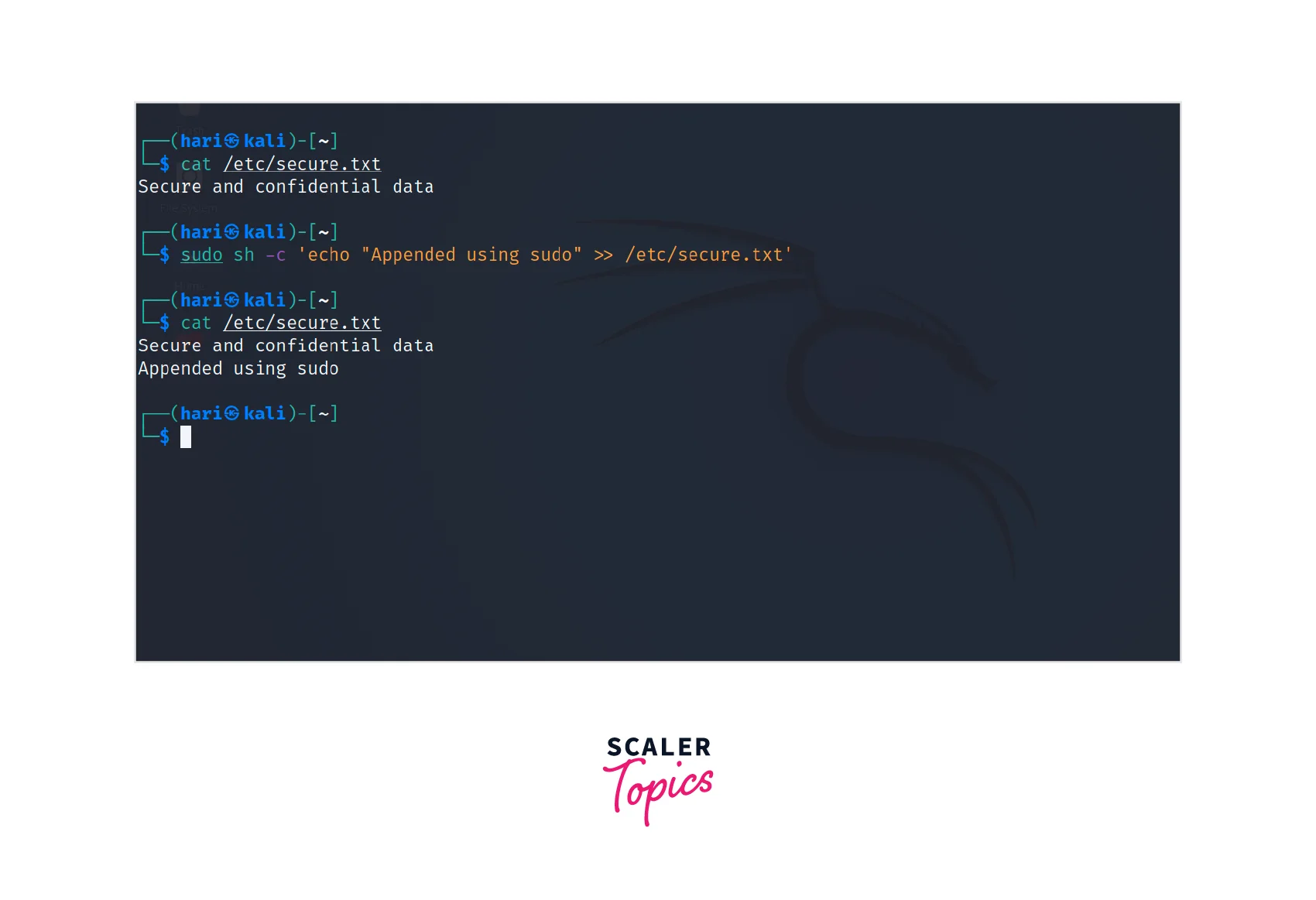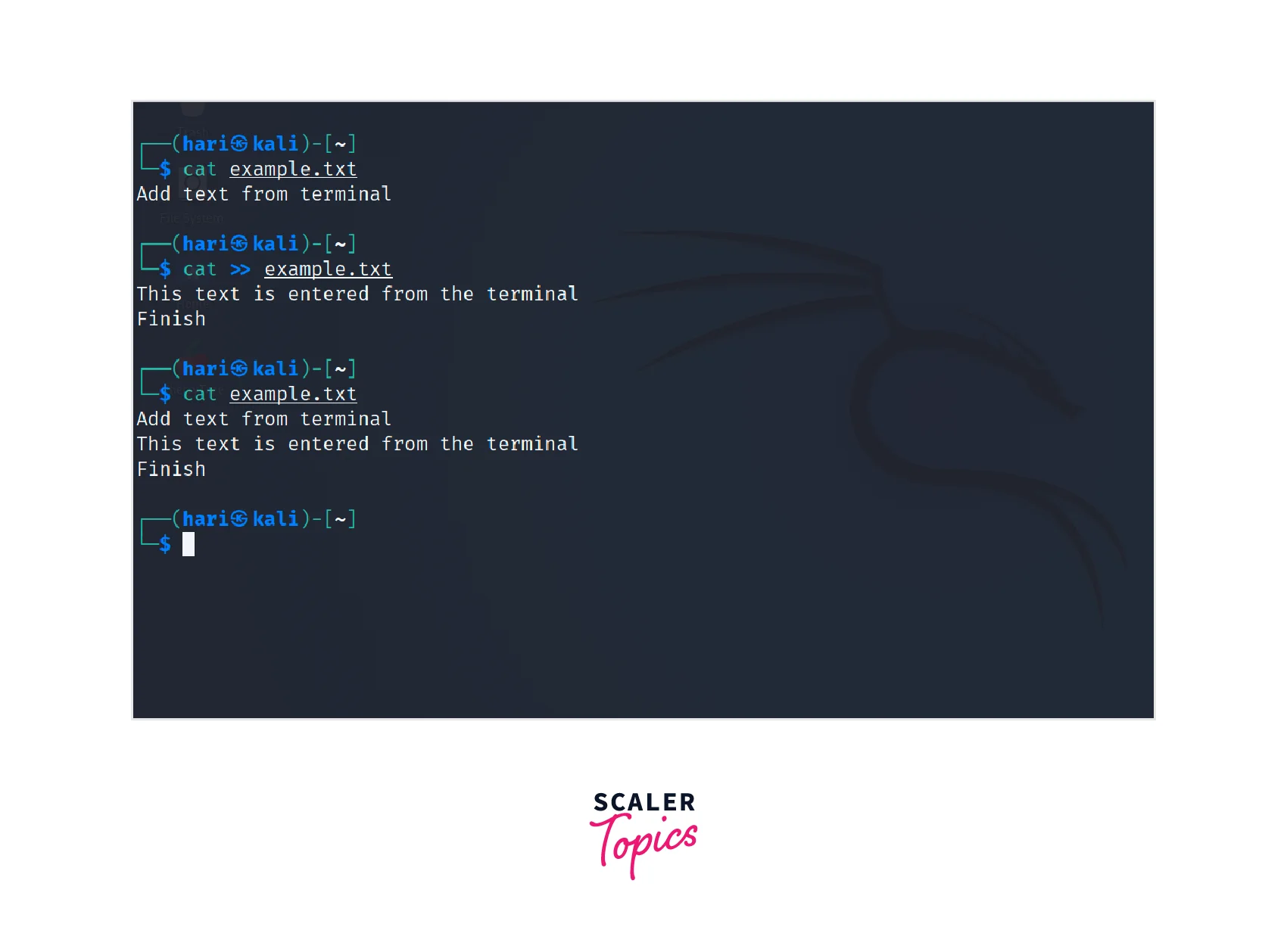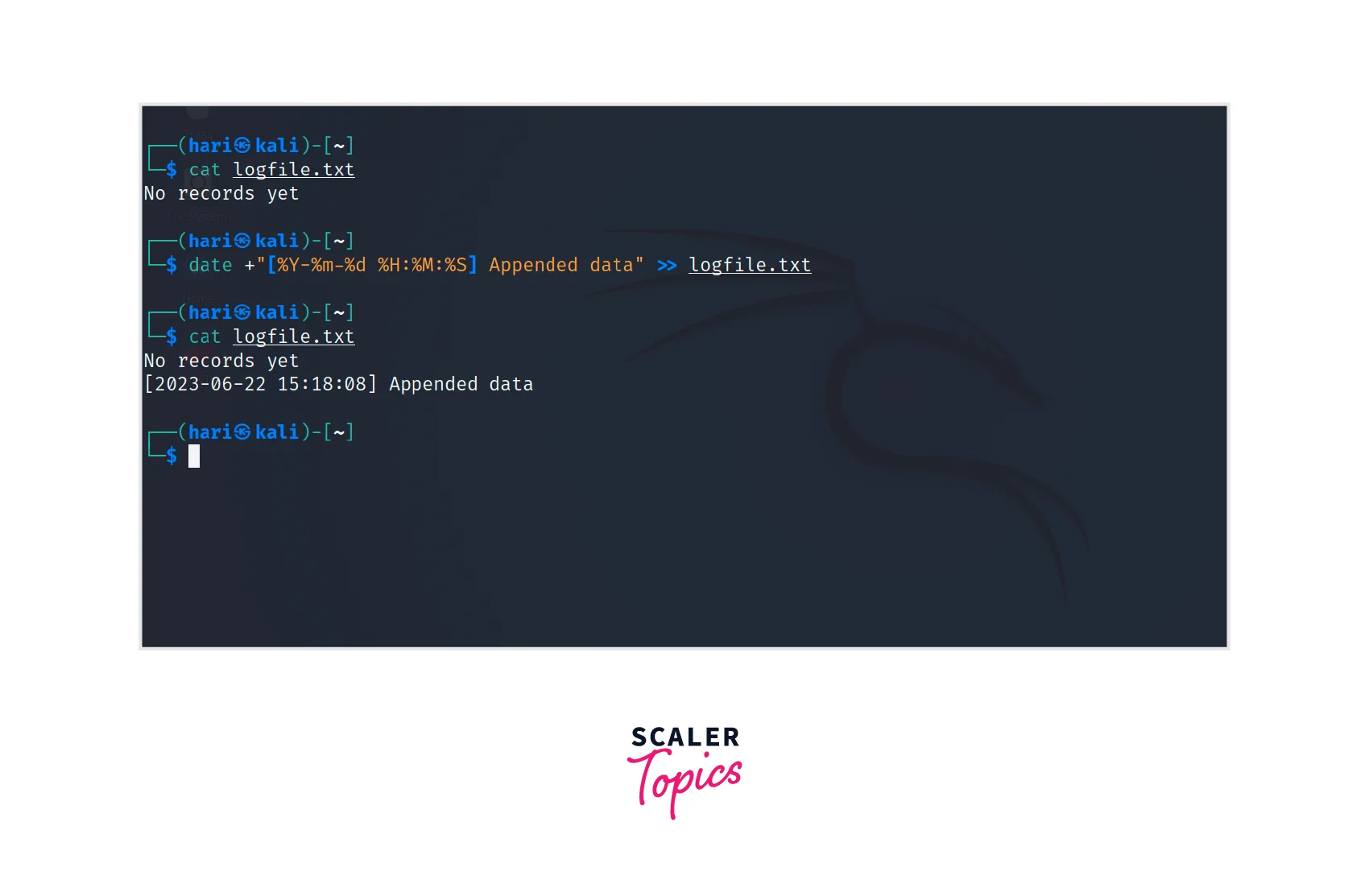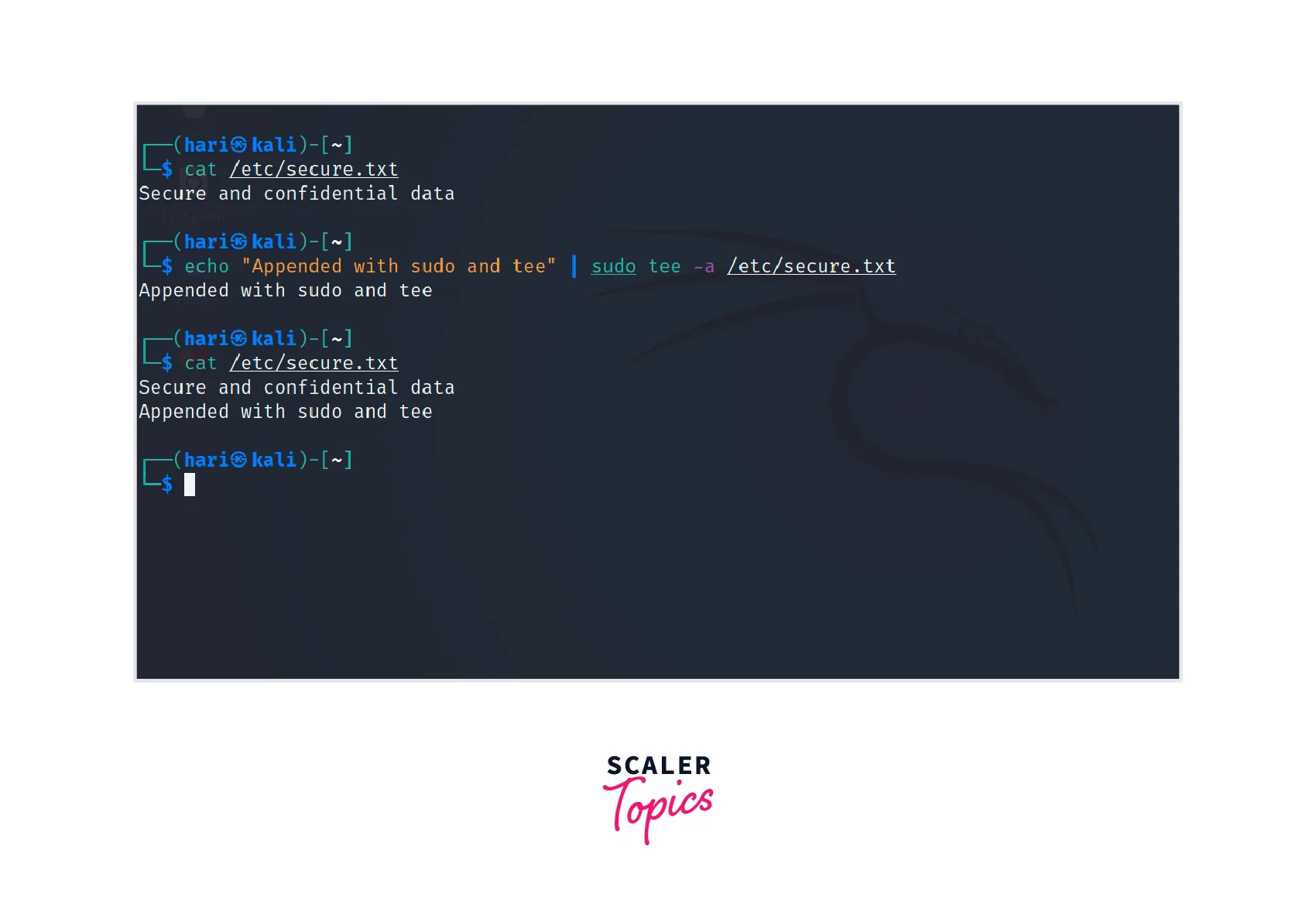How To Append Text to End of File in Linux?
If you are a Linux user, you may often find yourself needing to append text to the end of a file. Appending data to a file is usually used to add additional information to a log file or update a configuration file. Appending data to a file can be time-consuming if you don't know the necessary commands used to append data to a file. In this article, we will explore linux append to file with different techniques to append text to the end of a file in Linux.
How to Redirect the Output of the Command or Data to the End of the File
One of the most used and common ways to append text to the end of a file in Linux is by redirecting the data or output of a command to the file. This can be achieved by using the >> operator followed by the file name. The syntax for using this operator is,
The command can be any of the commands that are used to show data on the terminal. The >> operator collects the data from the command and if the file doesn't exist, a new file is created with the data and if the file already exists, the data is added to the existing content without modifying or removing any of the existing data.
Note: Remember that the > operator is used to replace the contents of an existing file with the output of the command.
How to Add Lines to the End of a File in Linux
Appending multiple lines of text for linux append to a file can be done using various methods or commands with the >> operator.
These commands are:
- The echo command with the -e option can be used to add multiple lines to the end of a file. The interpretation of escape sequences can be enabled using the -e process.
This command will perform a linux append to file of three lines of text to the file example.txt using the >> operator. The escape sequence(\n) represents a line break.

- The printf command used along with the echo command can also be used to add lines to the end of a file in Linux. The command has two steps,
- The printf command with the -v option to store the lines of text in a variable.
- The echo command to get the data stored in the variable and append them to the file.

In this example, the lines of text are stored in the variable lines using the -v option of the printf command. Then, the echo command is used to append the contents of the variable to the file.
- Another method for linux append to file is by redirecting input from a here document. A here document allows you to specify a block of text directly in the command.
 In this example, the cat command is used along with the >> operator. The text between the << EOF and EOF markers will be appended to the file example.txt. You can replace EOF with any marker of your choice.
In this example, the cat command is used along with the >> operator. The text between the << EOF and EOF markers will be appended to the file example.txt. You can replace EOF with any marker of your choice.
In Linux, a Here Document is a convenient way to include a block of text directly within a command or script without the need for external files. It allows you to specify the text inline, making it useful for tasks like appending multiple lines of text to a file.
How to Append Standard Output and Standard Error
In Linux, standard error, or stderr, is the stream where error messages are sent. We can get this error message to a file by using the 2> operator. It is also possible to append both the standard output and standard error to a file simultaneously. This can be useful for capturing error messages or logging the output of a command. We can use the following syntax to perform this,
In this command, 2>&1 redirects the standard error to the same file as the standard output. This ensures that both the output and any error messages are appended to the end of the file.
 This will record the error that the folder does not exist in the info.txt along with previous data.
This will record the error that the folder does not exist in the info.txt along with previous data.
Append Text When Using Sudo
In Linux, the sudo privileges can be applied to one command at a time by default, and therefore, we can't perform linux append to file using only the >> operator as it does not work directly with sudo. However, you can overcome this limitation by either using the tee command with sudo or using the sh or shell command with the -c flag.
We need to create a shell interpreter with sudo privileges to append text to a file with administrative privileges. The following example shows this,
The sudo gives the privileges to access the /etc folder, and sh with the -c option is used to specify that the following argument should be treated as a command and executed.

We will explore the tee command in the next section.
How to Append the Text in the File on the Terminal
Appending text to a file directly from the terminal is an easy process in Linux. You can use the cat command along with the redirection operator >> to achieve this. Here's an example command,

After executing this command, the terminal will be in append mode, waiting for you to enter the text. Type the desired text and press Enter. To exit append mode, press Ctrl + D. The text you entered will be appended to the file example.txt.
Using >> Operator
The >> operator is a commonly used method for linux append to file. It allows you to redirect the output of a command or data and append it to the file. We can
You can append the current date and time to a log file using the date command along with the >> operator. Here's an example,

This command captures the current date and time using the date command and formats it as per the specified pattern. The resulting timestamp, along with the appended data, is then written to the logfile.txt using the >> operator.
Using tee Command
The tee command is another useful tool for appending text to a file in Linux. When we want to append data to a file that needs administrative privileges when to be accessed, we can use the tee command. The -a option in the tee command is used to append text to a file with administrative privileges. The following command shows an example,

In this command, the echo command outputs the desired text, which is then piped to the tee command with the -a option (append mode) and the file name secure.txt. The tee command, when used with sudo, allows you to access the /etc folder and append text to the file with administrative privileges.
Conclusion
- The redirection(>>) operator is commonly used to redirect the output of a command or data and used for linux append to file.
- You can use the echo command with the >> operator to add lines of text to the end of a file.
- To append both standard output and standard error to a file, use the 2>&1 syntax.
- When using the sudo command, you can use the tee command or the echo command with the sudo privileged shell interpreter to append text to a file with administrative privileges.
- The terminal provides options like using the cat command to append text directly from the terminal.
- By following the methods described in this article, you can efficiently append text to a file in Linux, ensuring that your files are updated, and your data remains intact.
